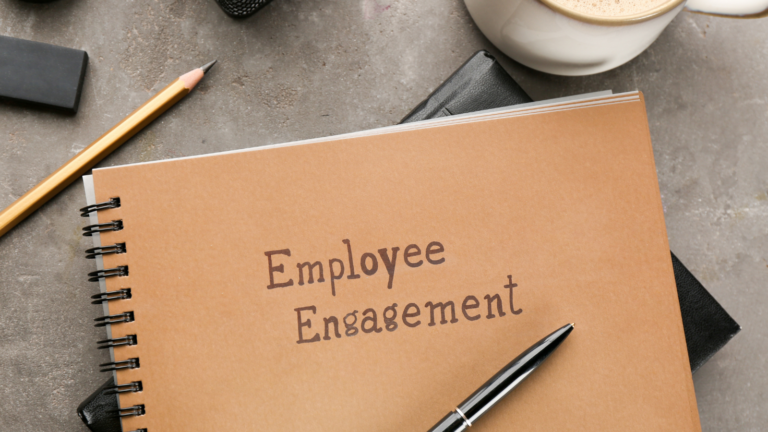Everyone likes to feel recognised and rewarded for a job well performed. Don’t you? And undoubtedly, your employees are no exception to it. Everyone who works in the corporate world yearns for recognition of their work by employers.
According to Gallup, if companies double the number of employees they recognise every week, there will be:
-
24% improvement in work quality
-
27% reduction in absenteeism
-
10% reduction in staff shrinkage
Regardless of your company’s size, formulating an employee recognition program that inspires and motivates is essential. However, if your organisation isn’t still aware of the potential of an employee recognition program and how to build one, this blog post is for you.
Let’s get started.
What is employee recognition?
Employee recognition involves multiple ways that an organisation uses to appreciate its employees for their contribution. A company can recognise its employees for several factors, such as performance achievements, reaching milestones, exhibiting professional behavior, etc. Employee recognition can take various forms, such as
-
Peer-to-peer recognition
-
Manager-led recognition
-
Leadership-led recognition
Having an employee recognition strategy offers several benefits to employers. These benefits include motivating employees for high performance, increasing employee engagement, and retaining top talent, thus providing a sense of security in their value to the company and motivating them to continue great work.
According to an employee survey by Great Place To Work, recognition makes employees feel promotions are fair and spurs innovation and extra effort
Compared to those who do not consistently feel recognized at work, people who do feel recognized at work are
-
2.6x more likely to think that promotions are fair
-
2.2x more likely to say innovative thinking is embraced
-
2.0x more likely to say people here are willing to go above and beyond
4 MUSTs of Employee Recognition
To build an employee recognition program that inspires and motivates, ensure the incorporation of 4 MUSTs.
-
M- Meaningful – Recognition must be detailed & meaningful, and the concerned employee should be aware of his actions that the organisation is recognising & rewarding.
-
U- Unified – Have a unified initiative to allow all to give and receive recognition under one brand.
-
S- Spotlight – Moments of recognition must be brought into the limelight to celebrate achievements and let everyone across the company know about them.
-
T- Timely – Avoid delays and send moments of recognition instantly that are accessible anytime, anywhere.
How to build a successful employee recognition program?
As you create your employee recognition program, it’s important to remember what you intend to achieve to move in the right direction. We are listing down the steps you must follow to create a program that recognises employees effectively & efficiently.
1. Create a Business Case for the Program
The first step is to comprehend the tangible and intangible benefits of the program and how they will bring organisational success. Next, conduct detailed research to identify benefits and assess scalability when your team’s strength varies. You also need to know what impact it will bring on finances.
Ultimately, the actions will lead you to secure the necessary budget and resources.
2. Outline Program Objectives
You should disseminate information among the employees about the evaluation process and criteria for evaluation. Employees should be well aware of the behaviour and actions that will be rewarded. The process will allow the employees to self-assess and determine whether they qualify for getting rewarded.
Another factor you need to consider here is the frequency of awards which should be limited to quarterly, half-yearly, and yearly.
3. Consider Multi-dimensional Reward Options
Explore reward and recognition options apart from financial incentives. Present-day employees value additional reward options such as health packages, training opportunities, family travel leaves, etc. Considering the potential of non-financial incentives, you can plan to incorporate them into the employee recognition program.
4. Train Managers
You cannot go all out with a program and tell your employees if your managers aren’t ready for it. On the flip side, things can become convenient for you if you train your managers before introducing the idea to the whole organisation. Teach managers about employee recognition and the importance of immediate & personal recognition.
5. Launch & Implement
Once you are ready with your organisation’s employee recognition program, you should plan its launch. But remember not to launch it behind closed doors— all employees should receive its communication.
Decide on a communication channel based on your business and ensure its effective use for communication. Moreover, every team member should also know its purpose and use.
6. Evaluate
Plan to find answers to the following questions:
-
What is the positive impact of the program on employee performance?
-
Is it increasing their productivity?
-
How will it help you retain employees in the long run?
To ease things, you can set performance benchmarks and assess whether these benchmarks are being met. This will help you evaluate the program’s effectiveness.
7. Update timely
You cannot learn how to inspire employees and keep them motivated unless you update the program. Ensure the perks and rewards you offer to match the employees’ expectations. Seek feedback from your team regularly and keep a close eye on the market trends. Finally, determine whether the employee recognition program requires modification and decide on further action.
At the End
Recognition is a top driver of employee engagement. Employees who believe they will be recognised, are more likely to be highly engaged. The right time to bring the program into action is now. Align your activities with organisational goals and start taking the initiative to build a well-thought employee recognition program.
Find the Right Talent with CGP Singapore…
We are a team of expert consultants that can help you hunt for qualified candidates. Talking about the numbers, in recent years, we have placed over 5,000 mid-to-high-end professionals across organisations worldwide. So if your company is looking for suitable candidates, we can help you.
FAQs
1. How to create a successful recognition program?
Creating a successful recognition program can be overwhelming if you don’t do it right. To make it a success, consider the following points:
-
Create a business case for the program
-
Outline program objectives
-
Consider multi-dimensional reward options
-
Train managers
-
Plan for a successful launch and implementation
-
Evaluate & update timely
2. What makes a good employee recognition program?
A good employee recognition program comprises the following features:
-
It allows for immediate recognition of employees.
-
It occurs timely— quarterly, half-yearly, or yearly.
-
It includes financial and non-financial options.
-
It provides autonomy to employees.
-
Update it timely.
3. What are the best recognition strategies?
The best employee recognition strategies are:
-
Make it public
-
Be specific
-
Recognise good performance immediately
-
Align employee’s accomplishments with the company
-
Be mindful of incentives
-
Evaluate the program
-
Diversify rewards








